Web Accessibility Services
Unlocking Digital Inclusion: Empowering All Users through Web Accessibility
Award-Winning Agency


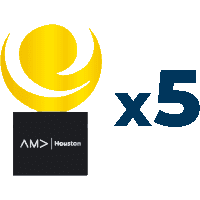

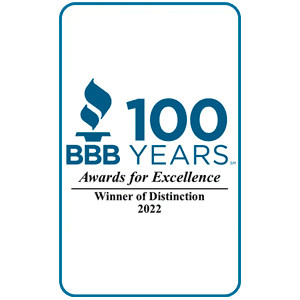
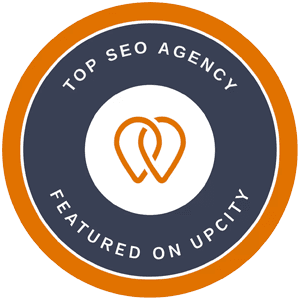
Enhance Your Website’s Accessibility with EWR Digital
Welcome to EWR Digital, your trusted partner in creating inclusive and accessible websites. We understand the importance of web accessibility in reaching a diverse audience and ensuring equal access to information. Our expert team is here to help you transform your website into an inclusive digital platform that meets the highest accessibility standards.
Comprehensive Web Accessibility Services
At EWR Digital, we offer a comprehensive suite of web accessibility services tailored to your specific needs. Our team of experienced designers and developers are well-versed in the latest accessibility guidelines, including WCAG 2.1, and can help you make your website more user-friendly for people with disabilities.
What is Web Accessibility?
Web accessibility refers to the practice of designing and developing websites and digital content in a way that ensures people with disabilities can perceive, understand, navigate, and interact with them effectively. It aims to remove barriers and provide equal access to information and functionality for all users, regardless of their disabilities.
Web accessibility has a significant impact on a wide range of individuals, including:
- People with visual impairments: This includes individuals who are blind, have low vision, or color blindness. Web accessibility enables them to access content using screen readers, magnifiers, or through alternative text for images.
- People with hearing impairments: Individuals who are deaf or hard of hearing can benefit from web accessibility through captions or transcripts for multimedia content, ensuring they can understand and engage with audio information.
- People with mobility impairments: Those with physical disabilities or motor impairments may rely on keyboard navigation, voice recognition software, or other assistive technologies to browse the web. Web accessibility ensures that websites can be easily navigated and interacted with using these tools.
- People with cognitive impairments: Individuals with cognitive disabilities, learning disabilities, or neurodivergent conditions may require clear and organized content, simplified navigation, and the option to adjust font sizes and colors to enhance readability and comprehension.
- Aging population: As people age, they may experience age-related disabilities, such as diminished vision or hearing, motor impairments, or cognitive decline. Web accessibility helps to accommodate the needs of older adults, allowing them to access and engage with digital content effectively.
- Temporary disabilities: Temporary disabilities, such as a broken arm or temporary vision impairment, can affect anyone. Web accessibility ensures that individuals facing temporary disabilities can still access and use websites during their recovery period.
.
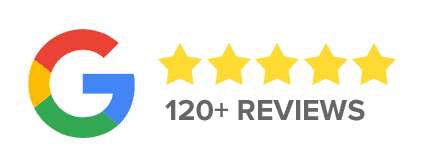
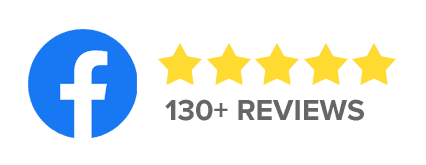
Why is Website Accessibility Important?
Legal Compliance: The majority of websites fall under the jurisdiction of accessibility laws like the Americans with Disabilities Act (ADA) or Section 508 of the Rehabilitation Act. Failure to comply with these regulations can lead to legal repercussions, as there are advocacy groups and individuals actively defending web accessibility rights. Additionally, there has been an increase in serial plaintiffs and attorneys seeking easy settlements for accessibility violations.
DEI and Digital Inclusion: Website accessibility is a crucial aspect of Diversity, Equity, and Inclusion (DEI), encompassing the rights of people with disabilities to be included in the digital realm. The COVID-19 pandemic highlighted the significance of digital access when the world heavily relied on the web for various activities. Ensuring accessibility provides equal opportunities for individuals with disabilities to participate fully in the digital landscape.
Business Opportunities: The importance of web accessibility extends beyond legal requirements. In the United States alone, there are approximately 61 million people with disabilities. Moreover, the baby boomer generation, comprising 71 million individuals with significant discretionary spending, faces similar challenges with vision, hearing, cognition, and fine motor skills. By prioritizing accessibility, businesses can tap into a larger market and provide better user experiences for all customers.
Current Compliance Status: Despite the progression of time, it is surprising that many websites still lack compliance. The WebAIM Million Project, which has been testing the top one million homepages for the past three years, reported that as of 2023, 96.3% of homepages were not compliant. On average, each homepage had 50.0 accessibility barriers, showcasing the widespread and deep-rooted nature of this problem.
WCAG Website Compliance: Enhancing Accessibility Standards
Website compliance with the Web Content Accessibility Guidelines (WCAG) is based on four fundamental principles: Perceivable, Operable, Understandable, and Robust. The following overview provides a glimpse into these principles, with limited examples. For comprehensive details, please refer to WCAG 2.1.
Perceivable: Information presented in a way users can perceive.
- Provide text alternatives for non-text content, ensuring accessibility for users who cannot perceive visuals.
- Include captions and alternatives for multimedia, enabling access for users with hearing impairments.
- Create adaptable content that can be presented in different formats, without losing its meaning.
- Optimize visibility and audibility of content for users with visual or auditory challenges.
Operable: User interface components and navigation that are easy to operate.
- Enable all functionality to be accessed via a keyboard, allowing users to navigate without relying on a mouse.
- Provide users with sufficient time to read and interact with content, preventing time-sensitive limitations.
- Avoid using content that may trigger seizures or other adverse reactions.
- Facilitate intuitive navigation and content discovery, aiding users in finding the desired information.
Understandable: Information and user interface operation that are easy to comprehend.
- Ensure text is readable and comprehensible, considering factors like font size, contrast, and language simplicity.
- Present content and functionality consistently, helping users predict the appearance and behavior of elements.
- Offer clear instructions and error messages, assisting users in avoiding and rectifying mistakes.
Robust: Content that can be reliably interpreted by various user agents.
- Design content to be compatible with a wide range of user agents, including assistive technologies.
- Ensure the accessibility features remain intact as technologies and user agents evolve.
By adhering to these WCAG principles, websites can enhance their accessibility, making information and services available to a broader audience as we advance technologically.

Accessibility Audit and Compliance
We begin by conducting a thorough accessibility audit of your website, examining its current level of accessibility and identifying areas that require improvement. Our experts will assess compliance with WCAG 2.1 guidelines, ensuring your website meets the necessary standards to provide an inclusive user experience.
During a web accessibility audit, several aspects of a website are assessed to evaluate its level of accessibility. Here is a list of common items that web accessibility audits typically cover:
- Page structure and semantics: Assessing the proper use of headings, lists, and other structural elements to provide clear and organized content hierarchy.
- Alternative text for images: Checking if all images have descriptive alternative text (alt text) that conveys their meaning and context to users who cannot see them.
- Color contrast: Verifying that text and graphical elements have sufficient color contrast to ensure readability for users with visual impairments.
- Keyboard accessibility: Ensuring that all interactive elements, menus, and functionality can be accessed and operated using only the keyboard, without reliance on a mouse or other pointing device.
- Forms and input fields: Reviewing form elements for proper labeling, clear instructions, and error validation techniques that are perceivable and understandable.
- Multimedia accessibility: Checking the availability of captions, transcripts, and audio descriptions for videos and other multimedia content to make them accessible to individuals with hearing or visual impairments.
- Navigation and links: Assessing the clarity and consistency of website navigation, including the availability of skip links and the descriptive nature of link text.
- Text alternatives for non-text content: Ensuring that non-text content, such as charts, diagrams, or infographics, has descriptive text alternatives to convey the same information.
- Responsive design and mobile accessibility: Verifying that the website is designed responsively and functions well on different screen sizes and mobile devices, with accessible touch targets and scalable content.
- Focus indicators: Checking if interactive elements receive clear and visible focus indicators, allowing users to understand their current focus location while navigating through the website.
- Readability and language: Assessing the readability of content, including font size, spacing, and language clarity, to ensure it can be easily understood by individuals with cognitive or reading disabilities.
- Assistive technology compatibility: Testing the website’s compatibility with assistive technologies, such as screen readers, screen magnifiers, and voice recognition software, to ensure a seamless experience for users who rely on these tools.
- Compliance with accessibility guidelines: Evaluating the website against relevant accessibility standards, such as the Web Content Accessibility Guidelines (WCAG), to determine its level of compliance.
These items are just a starting point, and the specific criteria covered in a web accessibility audit may vary based on the chosen accessibility standards and the requirements of the client or relevant regulations.
Inclusive Design and Development
Our talented design and development team will work closely with you to create an inclusive design that caters to all users. From color contrast optimization to intuitive navigation, we implement best practices to make your website accessible to individuals with varying abilities, ensuring a seamless browsing experience for everyone.
The controversy surrounding overlays versus manual web development in the context of web accessibility revolves around the approach taken to achieve accessibility compliance. Let’s discuss the advantages and disadvantages of each approach:
Overlays: Overlays, also known as accessibility widgets or plugins, are third-party tools that can be added to a website to address accessibility issues. These tools typically rely on JavaScript to modify the website’s presentation and functionality to improve accessibility. Here are some advantages and disadvantages:
Advantages:
- Quick implementation: Overlays can be implemented relatively quickly, often requiring minimal changes to the website’s existing codebase.
- Cost-effective: Overlays are typically offered as subscription-based services, which can be more affordable in the short term compared to manual web development.
- User customization: Some overlays provide users with customization options, allowing them to adjust the website’s accessibility settings according to their specific needs.
Disadvantages:
- Reliance on third-party tools: Overlays depend on external services, and if the overlay provider goes out of business or discontinues their service, accessibility support may be compromised.
- Limited effectiveness: Overlays often provide a partial solution to accessibility issues and may not fully address all WCAG guidelines. They can sometimes generate false positives or negatives in automated accessibility testing.
- User experience implications: Overlays can alter the website’s design, functionality, and user experience, potentially leading to conflicts with the website’s original design intent or causing usability issues for certain users.
Manual Web Development: Manual web development involves implementing accessibility features and adhering to accessibility guidelines directly during the website’s design and development phases. Here are some advantages and disadvantages:
Advantages:
- Comprehensive accessibility: Manual web development allows for a more thorough and tailored approach to accessibility, addressing a broader range of WCAG guidelines and ensuring compliance with specific accessibility standards.
- Design and UX control: By incorporating accessibility considerations from the start, developers have more control over the website’s design, layout, and user experience, ensuring accessibility is seamlessly integrated.
- Long-term sustainability: Building accessibility directly into the website’s codebase ensures ongoing compliance, as it becomes an integral part of the development process.
Disadvantages:
- Time and cost: Manual web development for accessibility can be time-consuming and may require more resources compared to implementing overlays. It may involve substantial code modifications and additional testing efforts.
- Expertise required: Developing for accessibility requires a solid understanding of accessibility guidelines and best practices. It may require specialized knowledge and training to ensure proper implementation.
- Maintenance and updates: Manual development necessitates ongoing maintenance and updates to keep the website accessible as new technologies, standards, and guidelines emerge.
In summary, overlays offer a quick and cost-effective solution for some accessibility issues but may have limitations and user experience implications. Manual web development provides a more comprehensive and tailored approach to accessibility but requires additional time, resources, and expertise. Both approaches have their pros and cons, and the choice between them depends on factors such as budget, time constraints, long-term sustainability goals, and the specific accessibility needs of the website and its users.
Testing, Validation, and Ongoing Support
We conduct rigorous testing and validation to ensure your website meets the highest accessibility standards. Our team utilizes automated tools, manual testing techniques, and assistive technology testing to identify and resolve any accessibility issues. We also provide ongoing support to address any future accessibility concerns that may arise.
Here are some web accessibility tools and free automated audit tools that can assist in evaluating and identifying accessibility issues on websites:
- WebAIM’s WAVE (Web Accessibility Evaluation Tool): WAVE is a widely-used web accessibility evaluation tool that provides visual feedback and suggestions for improving accessibility. It highlights potential accessibility issues on web pages and offers detailed explanations of each issue. WAVE offers browser extensions and an online tool for testing website accessibility. Website: https://wave.webaim.org/
- Google Lighthouse: Lighthouse is an automated testing tool built into the Chrome DevTools. It provides an Accessibility audit feature that examines a website for common accessibility issues. Lighthouse generates a report with suggestions for improving accessibility, performance, and other aspects of web development. Website: https://developers.google.com/web/tools/lighthouse
- AChecker: AChecker is a web accessibility evaluation tool that scans web pages against the WCAG and Section 508 accessibility guidelines. It provides a detailed report of accessibility violations, warnings, and manual checks. AChecker also offers an API for programmatic accessibility testing. Website: https://achecker.ca/
Remember that while these automated tools are useful for identifying potential accessibility issues, manual testing and human expertise are essential for comprehensive web accessibility assessments. Automated tools can provide a good starting point but should be supplemented with manual testing by individuals familiar with accessibility guidelines and best practices.
Schedule a Web Consultation
Which businesses are required to comply with the ADA?
ADA compliance refers to adhering to the regulations set forth by the Americans with Disabilities Act (ADA) passed in 1990. The ADA prohibits discrimination against individuals with disabilities, guaranteeing equal rights and opportunities across various sectors, including employment, education, transportation, and public accommodations.
In 2010, the U.S. Department of Justice established the Americans with Disabilities Act Standards for Accessible Design. These standards require electronic and information technology, including websites, to be accessible to individuals with disabilities, such as those with vision impairments or hearing loss. The goal is to ensure that everyone, regardless of their disabilities, can access and interact with digital content and technology on an equal basis.
The first thing to understand about the ADA is which businesses must comply.
- Title I: Title I of the ADA covers any business with at least 15 full-time employees operating for 20 or more weeks yearly.
- Title III: Under Title III, businesses that fall into the “public accommodation” category, such as hotels, banks and public transportation, must also comply. The entirety of the law applies, from physical considerations to digital accommodations.
If your business falls under Title I or Title III of the ADA and you do not believe you are compliant, consult with a disability lawyer to explore your options.
How Much Does A WCAG Audit Cost?
The cost of a WCAG audit is influenced by several factors, including the size and complexity of your website or application, as well as your desired level of accessibility. Determining whether you aim to meet the minimum requirements to mitigate legal risks or strive for comprehensive inclusion will impact the overall cost. Ultimately, the amount you choose to invest reflects your commitment to minimizing legal liabilities and ensuring your website accommodates a diverse range of visitors.
Typically, WCAG audits for most websites fall within the range of $3,000 or less to approximately $30,000. However, it is important to note that costs can be managed by adopting a phased approach, spreading the expenses over multiple budget cycles. This allows you to prioritize and address critical accessibility issues incrementally while effectively managing financial resources.
By investing in a WCAG audit, you demonstrate a proactive approach to accessibility, benefiting both your organization and your website’s users. Ensuring inclusivity not only mitigates legal risks but also fosters a positive user experience for individuals with disabilities, ultimately broadening your reach and promoting equal access for all.




